“A Genuine Snowstorm in Houston, Texas”
As laid out above, rain began on Wednesday, February 13th during the evening. It changed to sleet and then snow around 8 or 9 PM. By as late as 1 AM on Thursday, February 14th, something along the lines of what we’d call a “coating” (less than one inch, roughly) covered the city. Based on the accounts published in the Houston Post, between 1 and 3 AM, the storm likely began to develop and deepen in the Gulf. It turned colder in Houston, temperatures dropped below freezing, and the snow began to accumulate fairly rapidly.
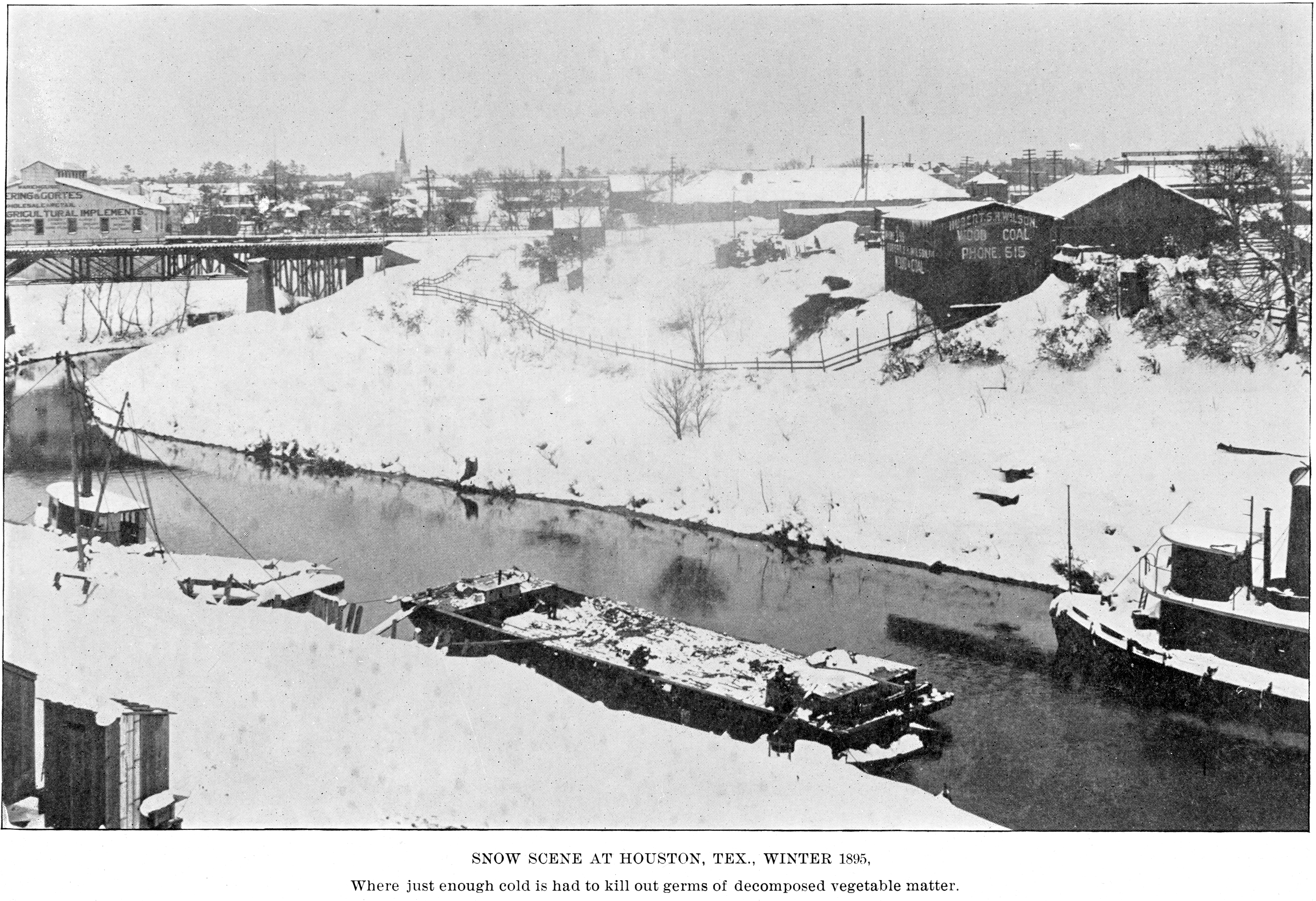
On the morning of Valentine’s Day, Houston was a winter wonderland. The snow had accumulated to about one foot deep by 9 AM. The city was quiet and likely beautiful. “At the usual hour when stores and shops were being opened and men were hurrying to their work,” the Houston Post reported, “the streets were silent and deserted, and the almost trackless snow told the tale of a city’s quiet slumbers.” While it may seem difficult to imagine, Houston could have held its own with Boston or New York or Old City Philadelphia in terms of scenic winter beauty that day.
The snow continued most of the day and by the time things began to taper off on the morning of the 15th, Houston had recorded 20 inches of snow. It remains the single greatest snowstorm in our city’s history.
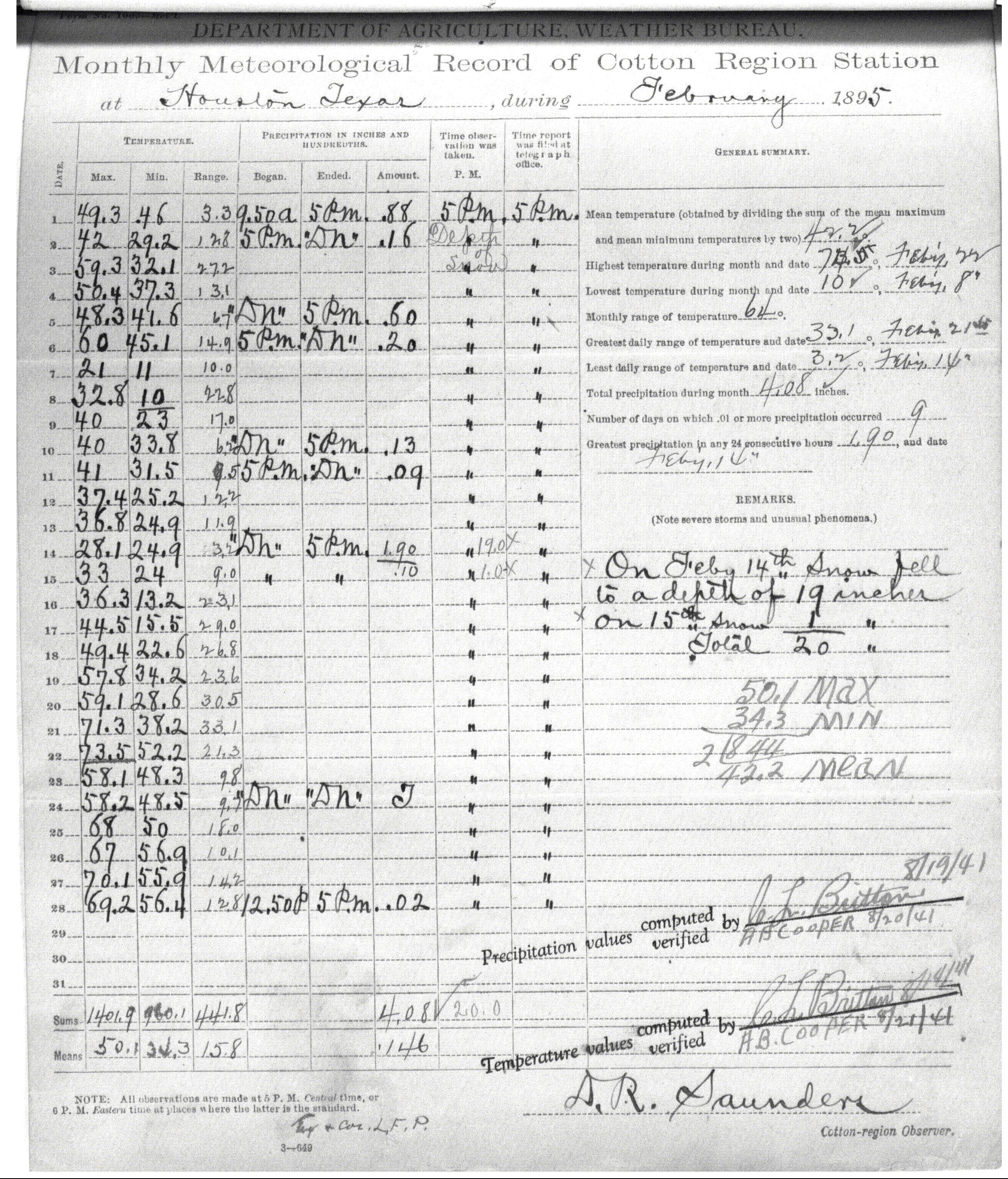
As you would expect with one to two feet of snow in Houston in 1895, the city was full of stories and mischief. Accounts from the morning include that of John K. Patrick, who was the manager of the Houston Transfer Company. He got outside at 8 AM and toured the city, “seated in a sleigh that would have done credit to a city where sleighing is a common winter amusement,” wrote the Post. Sleighs became a common sight, practical but also amusing. Patrick helped citizens struggling with the snow get about the city, including Harris County Commissioner Baldwin Rice. The ride ended when a gang of snowball hurlers attacked.
“Snowballs took the place of Valentines”
Virtually every account of this storm from every town I looked at had one thing in common: Mischievous snowballers. Naturally, in a place where snow is a rarity, you would expect young residents to build snowmen and hurl snowballs. From Austin through New Orleans, the snowball became a source of amusement and, at times, weaponry.
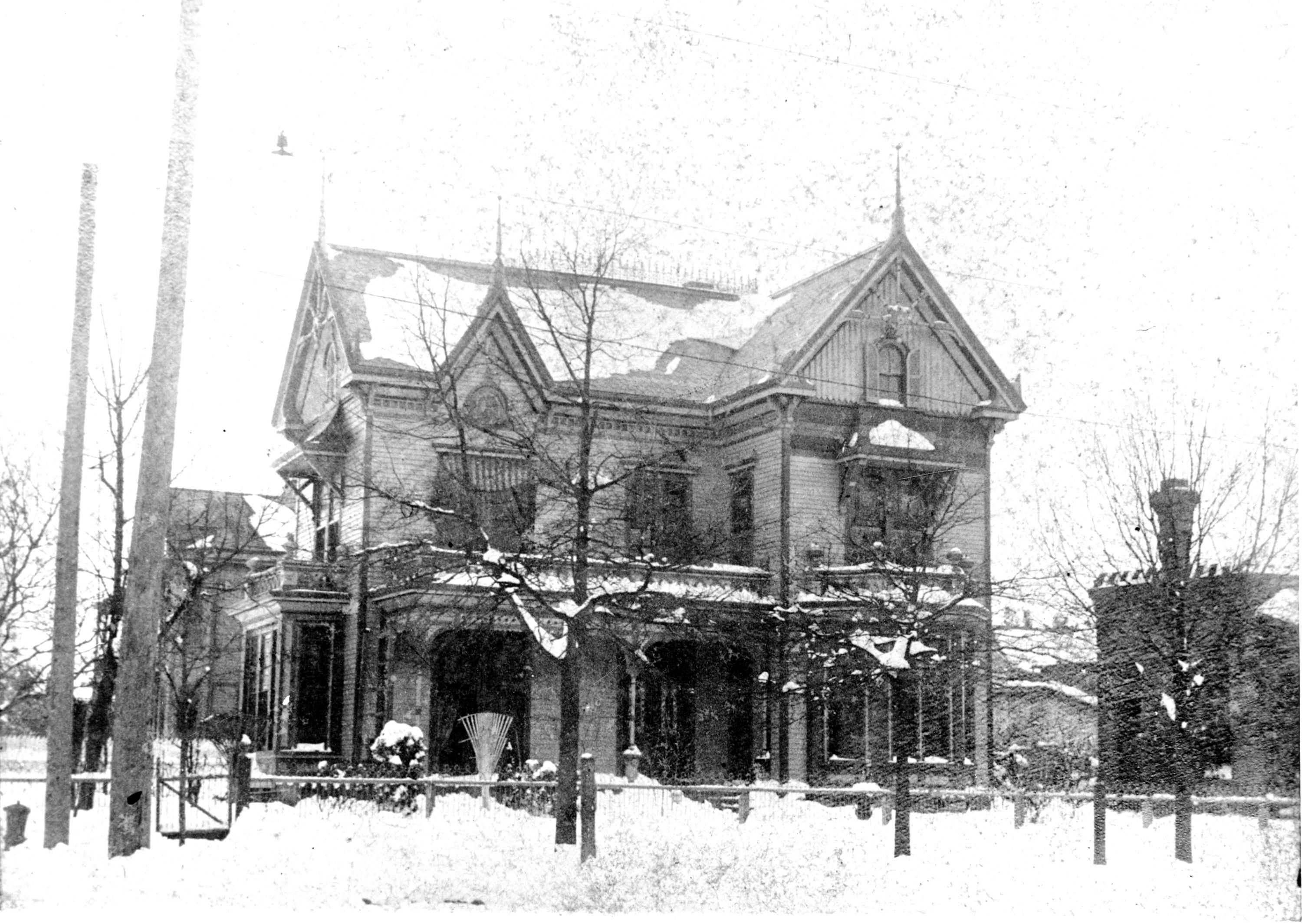
The Houston Post sternly admonished the police of Houston for not doing enough to control the increasingly unruly gangs of snowball hurlers. On Valentine’s Day afternoon, one particularly intense group assembled at Preston and Travis, where Market Square Park sits today. Roughly 50 or 60 men and boys hurled snowballs at passers-by, which was common, but they opted to include chunks of coal and small stones within the snowballs. An unfortunate German resident named Egbert Muller was hit by two snowballs, one in the mouth and one below the eye. The first one knocked out two of Muller’s teeth. The second wounded him below the eye.
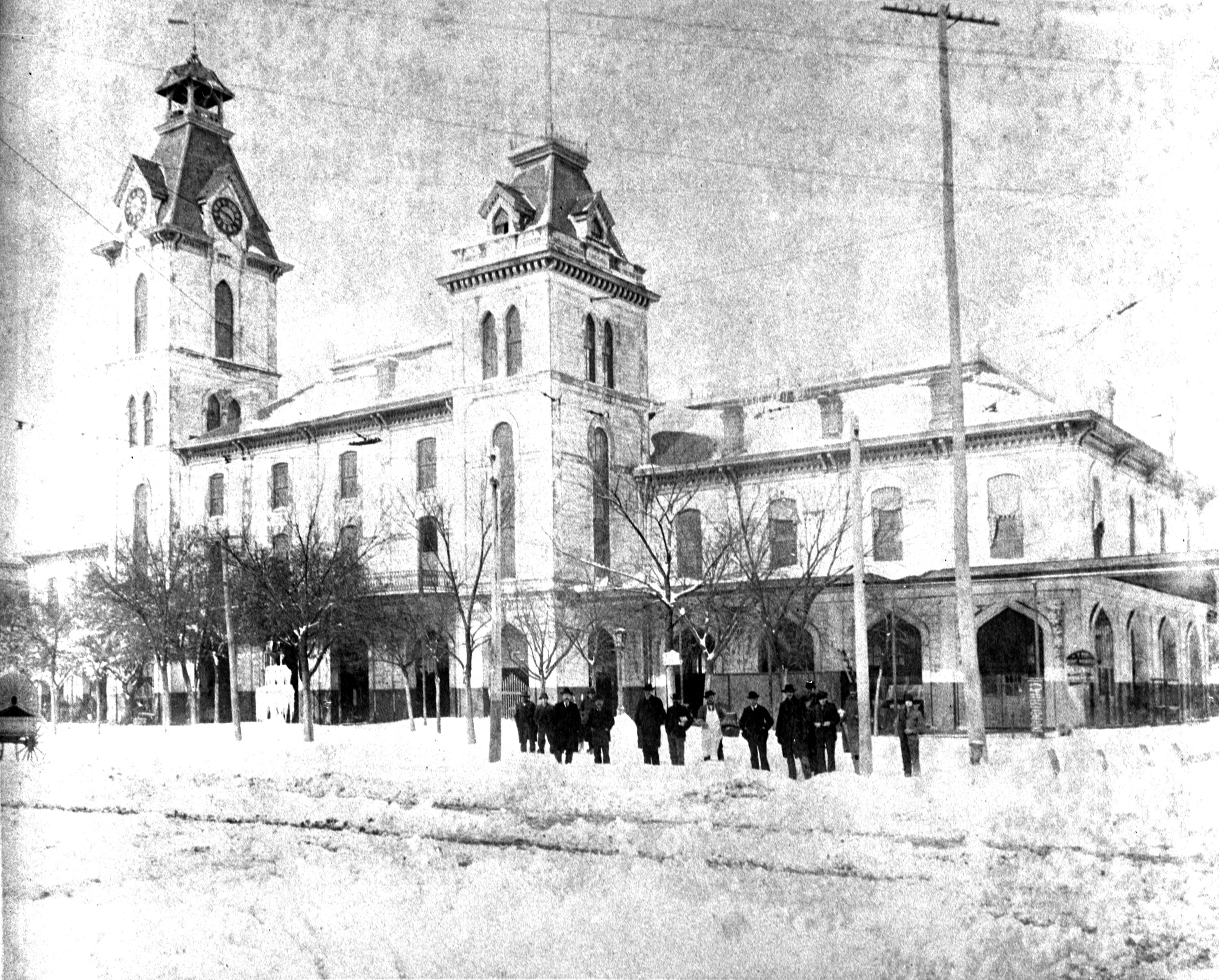
Despite that, most indulged in snowballing for good-natured fun. Crowds gathered at Main Street and Congress Street, others at Main and Preston. If you were out and about on the streets of Houston on February 14, 1895, you were pelted by snowballs. Every so often, as you’d expect, someone didn’t take kindly to being assaulted by snowballs. As the Post reported, in one or two instances “the parties aggrieved pulled their guns, the crowd scattered and probably thought better of their act.”
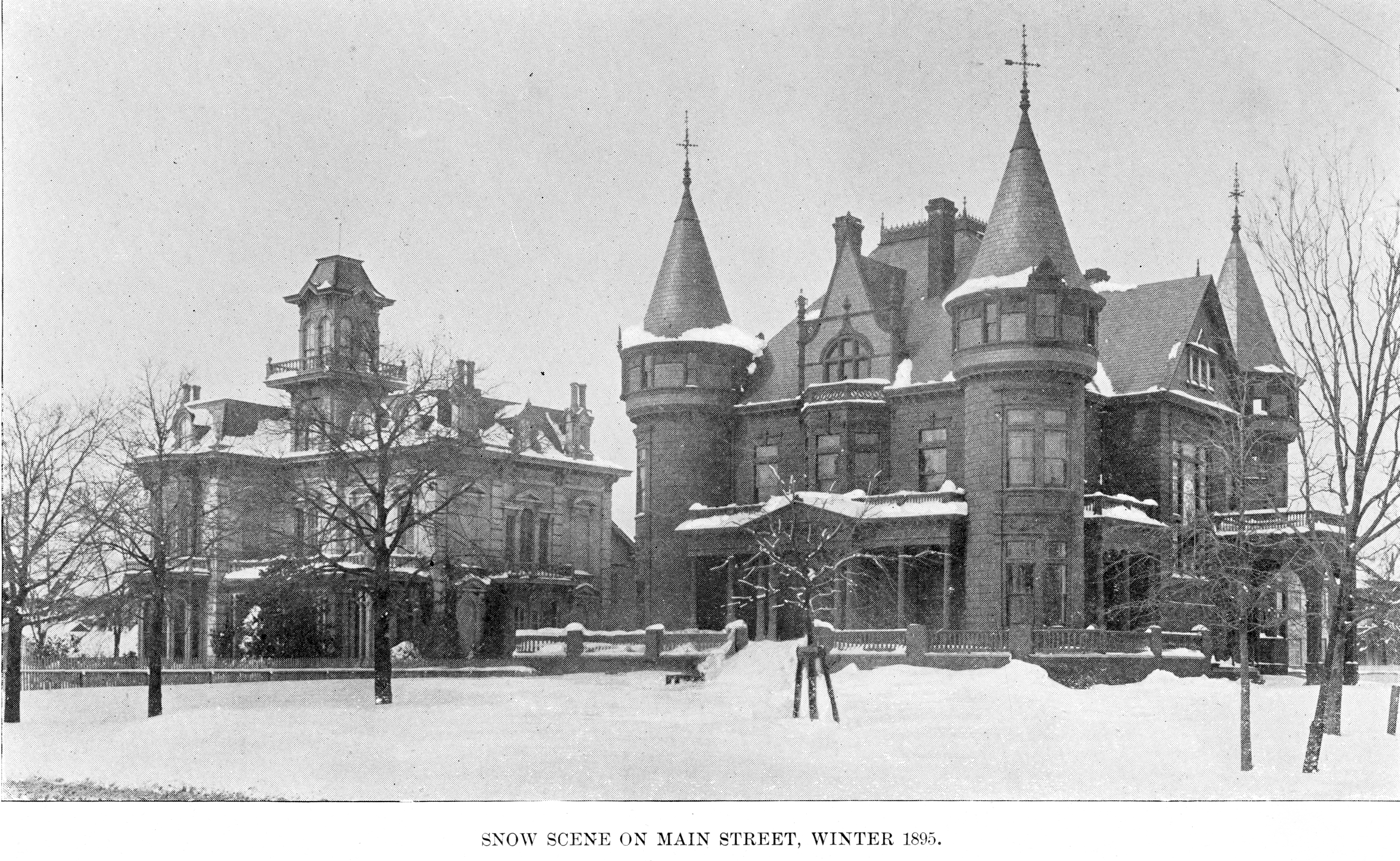
In Brenham, northwest of Houston, the story was much the same. The Brenham Daily Banner had one of the best descriptions of a snowstorm that I’ve ever read. They described the scene in Brenham on Valentine’s Day:
“Even that August body, the commissioners’ court, who have faced the music of mud throwing, kicking, etc. until they imagined they were impervious to the assault of snowballs, came down from the court house en route to dinner looking as stern as a Russian Czar and as sour as the disappointed end of Washington precinct over their decision about the capital, but it was not a sufficient coat of mail to protect them and they were snowballed until they reached a restaurant with bruised faces.”
Even better was their description of a group of young women that visited the top of the courthouse in Brenham:
“Quite a number of young ladies were out and entered with zest into the sport of snowballing. They visited the court house and went up in the cupola to get a good view of the snow covered city and pronounced it a scene unsurpassed in sublime grandeur. The sable pall of sky – the billowy hills swathed in the snow robes that had so kindly been thrown over Nature, the skeleton trees fringed with rich silver drapery and distant streams dumb in frost chains made a picture never witnessed before from the Brenham court house.”
In Opelousas, Louisiana, just north of Lafayette, “a majority of the people deserted their business cares to go forth on the streets and do battle with his or her neighbor.” In New Orleans, “the whole city was either throwing snowballs or being hit by them.” Even when policemen tried to intervene and slow down the snowball assaults, they were aggressively pelted by snowballs and forced to run away. Captain Robert E. Kerkam, who was the Weather Bureau chief in New Orleans was recognized, pelted with snowballs, and told “You are responsible for it all.” Always blaming the meteorologist, even in 1895.
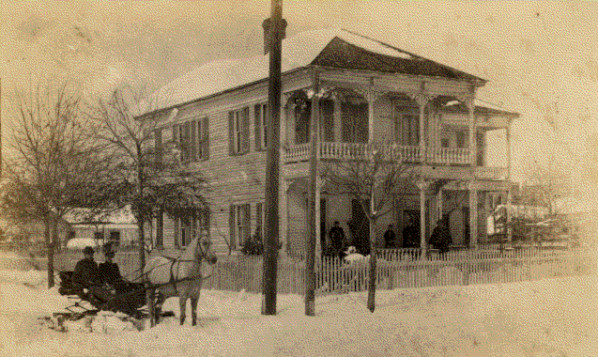
One of the more humorous snowball stories came from Austin, where a crowd of young men and boys gathered at the state capitol. After the legislature adjourned, they launched snowballs at the doors of the capitol or any lawmaker who poked his head out. Police eventually broke that situation up, but amusingly the outgoing governor, Jim Hogg, was not immune. The Austin Weekly Statesman described the incident.
“Governor Hogg and Representatives Kennedy and Owsley were the first to leave the capitol, and they got well out of the door before the snow ball party observed them. Then the balls flew thick and fast and the portly form of Governor Hogg soon looked as if he had been rolled in a snow bank. Balls struck him and the two representatives everywhere, but notwithstanding they appeared to enjoy the fun as much as the boys, especially Governor Hogg. Mr. Owsley had an umbrella with him which he hoisted as a means to ward off balls and it was totally demolished.”
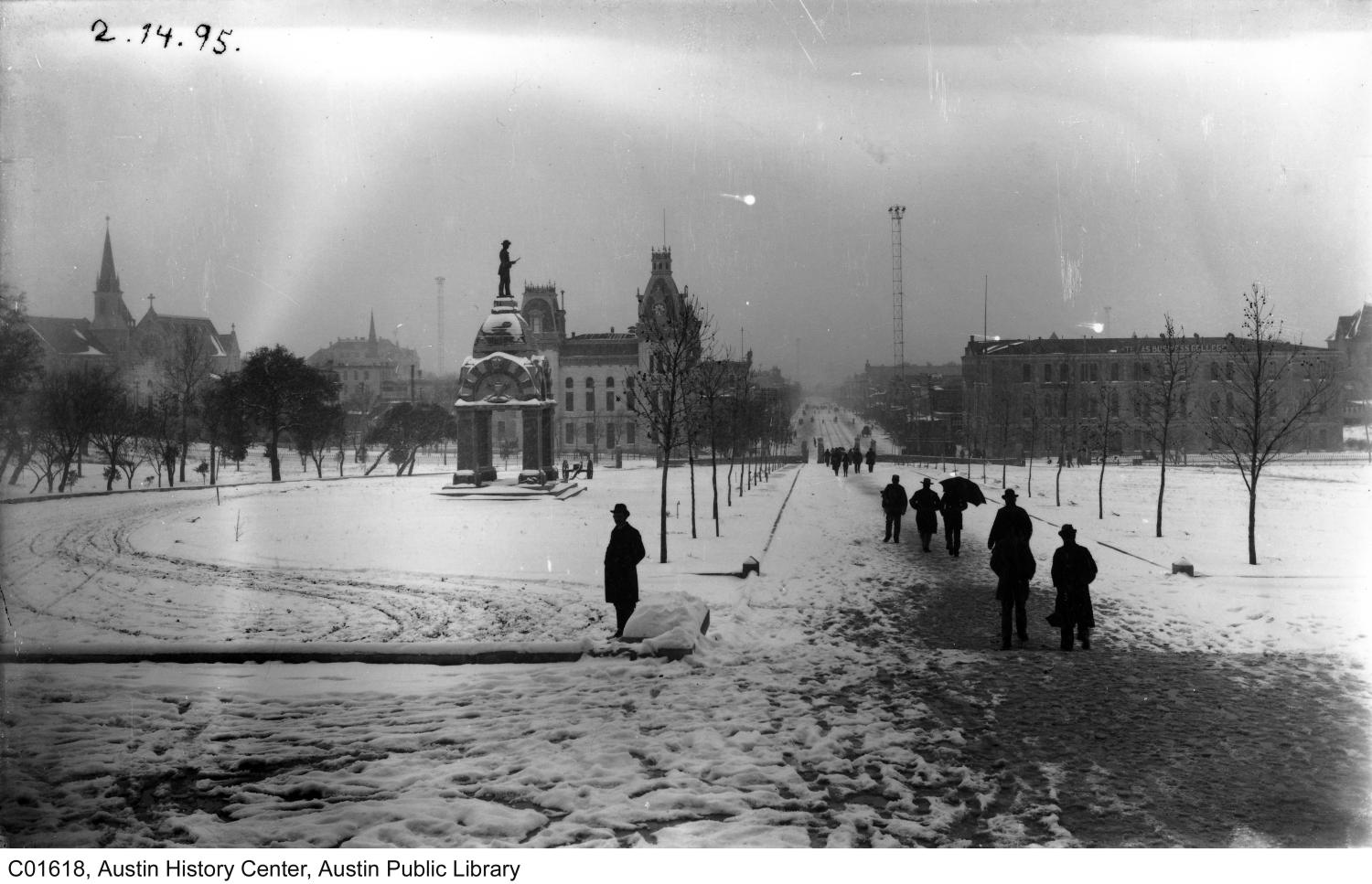
The story was no different in Galveston, which received 15.4 inches of snow. A group of about fifty boys hurled snowballs at the corner of Avenue H and Tremont Street (23rd Street). A bakery delivery driver was the victim of some of these snowballs. He “jumped from his seat and started after one of the boys with his whip. The boy ran and all the rest followed the man, howling with delight. He was thrown down and rolled in the snow until he looked like a pillar of salt. He walked back to his wagon very meekly.”
In a more serious Galveston incident, a gentleman was shot at 27th and Market. Jake O’Donnell received a slight gunshot wound in his side courtesy of someone displeased by being snowballed. Police were unable to track down the shooter.
Despite these occasional stories and poor behavior, many a resident of Texas and Louisiana had one heck of a time that Valentine’s Day.
(Post continues on next page)
BRAVO!!! What a great, well researched piece and all the stories within the story…loved the old pictures…sure wish we still had some of those beautiful old buildings…a number of chuckles, especially reading about state legislators in Austin dodging snowballs trying to exit the capitol…guess citizens back then shared differences with politicians…imagine that!
Thanks, Milt! Stories like this definitely make you appreciate the good parts of the past. I just can’t imagine seeing how beautiful Houston must have looked on Valentine’s Day morning that year.
Thanks for sharing!
Awesome stuff. Loved every bit!
Thanks, Brad!
Very interesting! Would love to experience snow again someday.
Agreed. Doubt we’ll see a storm of this magnitude/scale again, but we’ll probably see snow again one day.
Thank you, Matt! This was a treat to read. Wish something like this would happen again for us …
Thanks, Katie! It would be pretty incredible to see it happen again for sure!
What a fabulous and fascinating presentation! Thank you so much for all your work in doing this!
Thanks, Susan!
History can be so fascinating. And snow is so magical to us native Houstonians.
I loved the way this was put together, Matt. I always look forward to these forays in the past. Thanks so much for your effort.
What a fun read and the research needed to put this together must have taken weeks. The other take away is the prose contained in the newspaper reports. Just amazing.
fantastic article. Must have been strong upper feature following on front. dwarfs the 4 inches I say in College Station Jan 1964.
Thank you, Joe. Yes, I think a front followed by some wild upper level system digging out of the Southwest set off a fuse in the Gulf. Would be absolutely incredible to witness today.
Cool!
Oh my Goodness….Milt…..THANK YOU so very much for researching and writing this article …..please pass your information to the State of Texas historical society for I am sure the information will be read for generations to come. As a lifelong resident of Oklahoma I found the letter from Medford OK pleading for help from the people of Galveston particularly interesting. The letter shows multiple points about the histories of both Oklahoma and Texas. It proves, once again, that there were many people already homesteading in Oklahoma….waaaay before the 1901 Land Lottery. Once again, we earn the name Sooners . . . it also serves to remind US ALL….the citizens of Texas and Oklahoma……that no matter the scores in various competitions between Oklahoma / Texas (Texas / Oklahoma…..for Texans reading this)…..no matter the heated competitions……that our two states have a long history of coming to aid each each other through thick and thin……….WE help each other. My heart broke for Houston after Hurricane Harvey. I was also terrified having a nephew and his young beautiful sweet family living in Houston and water coming closer to his home every minute. I know the Houston recovery is continuing to this day. Houston has always been a shining city and will come out of Hurricane Harvey full of hope, light and goodness…..an example to the world of Hope and fulfillment of Hope…..a sparkling prosperous and affluent society.
Well said, and no worries about the name!
Matt…..I so apologize….I recently posted about this story and realized I called you Milt….I am sorry for that….truly….
Absolutely wonderful account, Matt. As a Houstonian with relatives in OK, I was reminded by Victoria’s post of why Texas is often referred to as Baja Oklahoma.
Does anyone know — was this the same storm that led to the name “Frozen Point” on East Galveston Bay where free ranging cattle were pushed to the bay for warmth and perished there?
You would be correct! https://www.crystalbeachlocalnews.com/frozen-point-and-the-snow-of-1895/